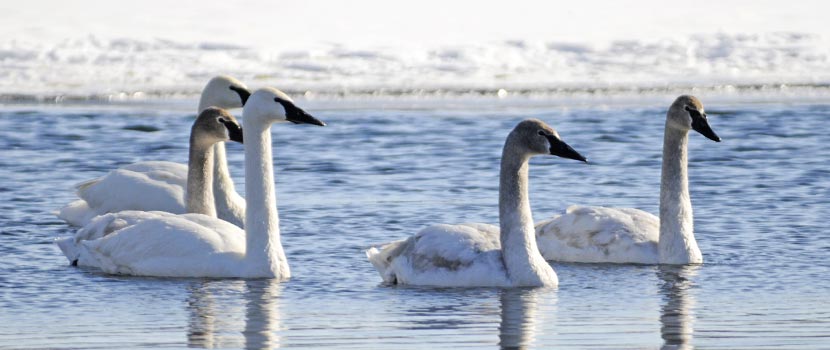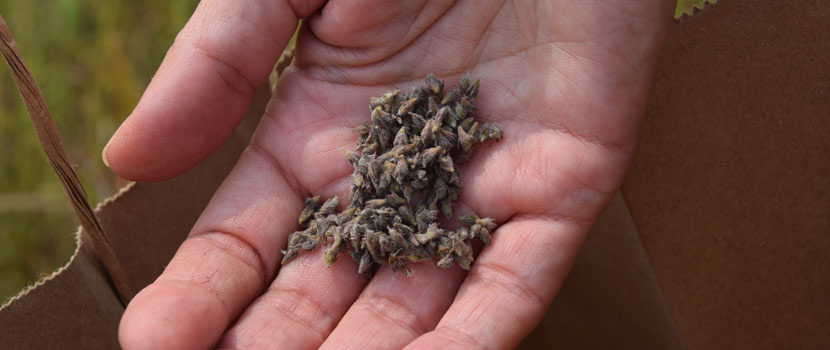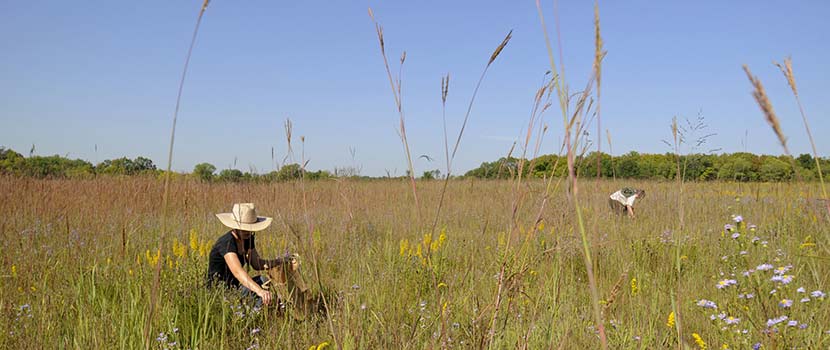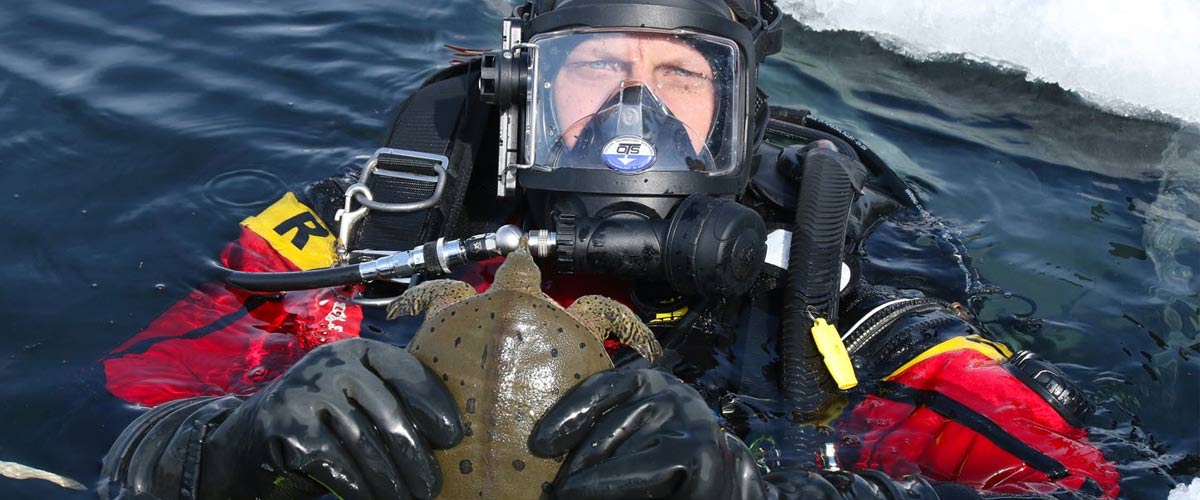
9 Things We Learned from the Medicine Lake Urban Turtle Project
By: John Moriarty
January 28, 2019
Category: Resource Management
Above: A diver holds a spiny softshell turtle in the winter. Photo by Siah St. Clair.
In 2013, several of us wondered where spiny softshell turtles went after they finished nesting at the west end of the beach in French Regional Park. I sat down with wildlife staff from Three Rivers Park District and Tim Lewis from the University of St. Thomas (UST) to brainstorm ideas to help answer that question.
The more we thought about it, the larger the study got: Painted and snapping turtles, water quality sampling, and a habitat assessment for all of Medicine Lake were added.
Once we knew what we wanted to do, we had to figure out how to pay for it.
FINDING FUNDING
We submitted a grant application to the Legislative Citizen Committee for Minnesota Resources. We asked for $250,000 to pay for UST students and Three Rivers seasonal technicians, water quality tests, radio telemetry equipment, traps, and other miscellaneous items.
Surprisingly, we got the funding (bringing a large female softshell named Molly into a legislative hearing may have helped, but that is another story). Plus, with UST acting as the fiscal agent, I fortunately did not have to deal with the paperwork.
The Medicine Lake urban turtle project was off to a great start.
THE STUDY
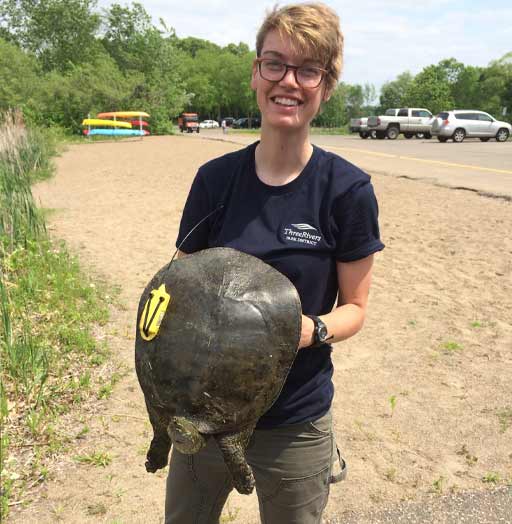
The study started in the spring of 2016. We trapped softshell, snapping and painted turtles (25 of each species) and attached radio transmitters. Each turtle was given a unique identification number using a passive integrated transponder (PIT) tag similar to the microchips used for dogs. We also obtained a DNA sample and recorded their weight, length, and sex.
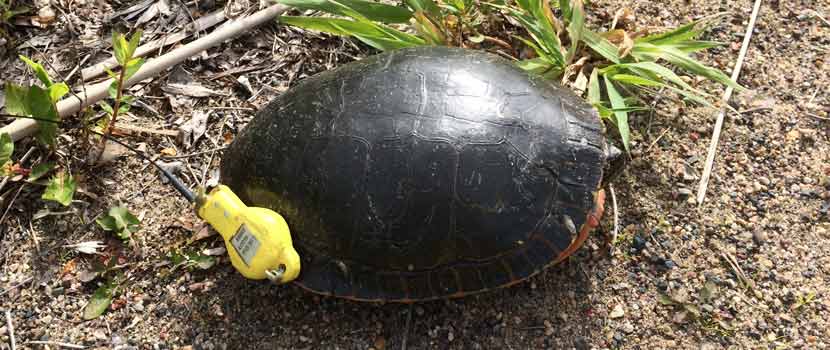
Using the radio transmitters, we followed the turtles to see where they went and what type of habitat they used. Two groups of students and/or seasonal technicians tracked turtles in outboards and canoes every day. A team of UST students also collected water chemistry data from the areas of the lake with known turtle locations.
We continued to trap and track the turtles during the summer and fall of 2017 and the summer of 2018. During this time, two of the original turtle trackers applied their experience and data to their final graduate projects and earned their Master of Science from Central Michigan University, a great bonus for the study.
So, what did we find after 1,000s of hours of tracking turtles?
Actually, a bunch of really cool things.
1. Softshells use the entire lake.
Softshells moved throughout the entire lake over the summer. They nested on the beach at French on the northern shore and then some would head to the east side of the lake or the City of Medicine Lake’s peninsula in the south.
One turtle swam over seven miles during one summer. She probably swam much more, but we could only measure straight lines from her weekly relocations. She covered well over 20 miles during the length of the study.
2. Softshell turtles are fast.
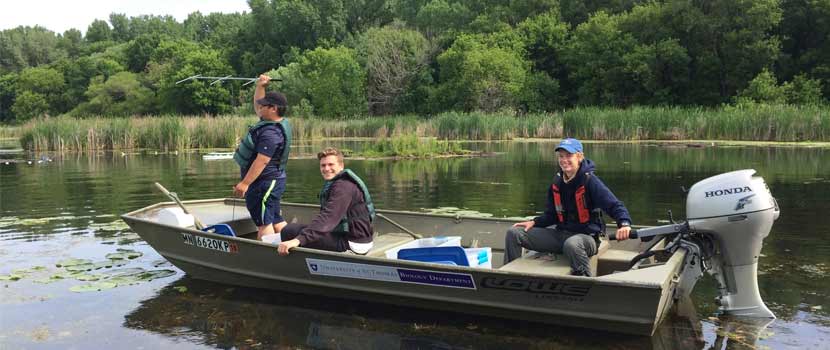
The turtle team conducted several 24-hour follows where they tracked three turtles per species every hour for 24 hours. They found that some of the softshell turtles moved across the width of Medicine Lake in less than one hour. That is 3/4 of a mile (or 4,000 feet). The snapping and painted turtles tended to move less than 100 feet in the same amount of time.
3. Snappers and painted turtles do not travel far.
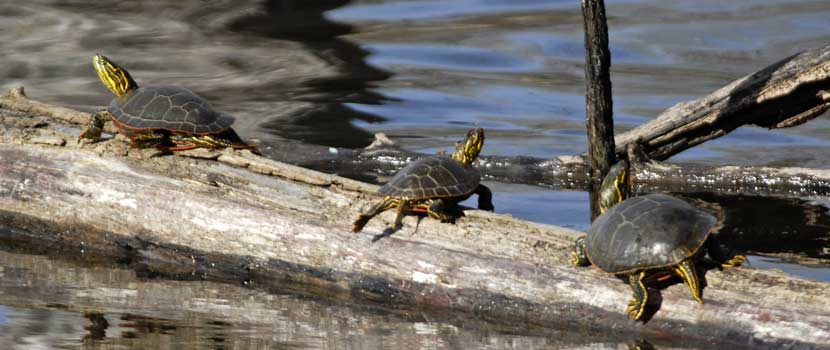
The snapping and painted turtles did not travel very far throughout the summer compared to the spiny softshells. They were content to stay in an area of less than 10 acres, whereas the softshells utilized over 800 acres. Some of the painted turtles never even left the lagoons in French Regional Park.
4. Softshell turtles from Medicine Lake are different than the softshells in the Mississippi River, but snappers are not different.
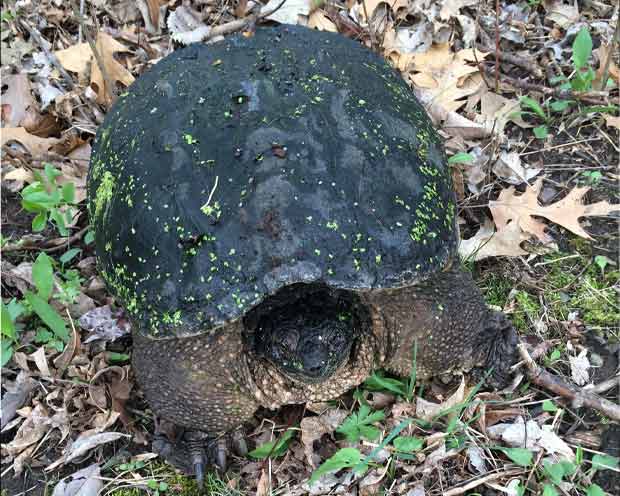
One of the graduate student projects looked at the genetic relationship of the softshells and snappers living in Medicine Lake and compared them to the same species from the Mississippi River near both Fort Snelling and Wabasha.
The snappers did not show any major genetic differences at any of the sites, but the softshells did show differences between the river and the lake. This shows that the Medicine Lake softshells are isolated from the river populations, but the snappers are not.
5. Softshells like areas with natural shorelines and sand.
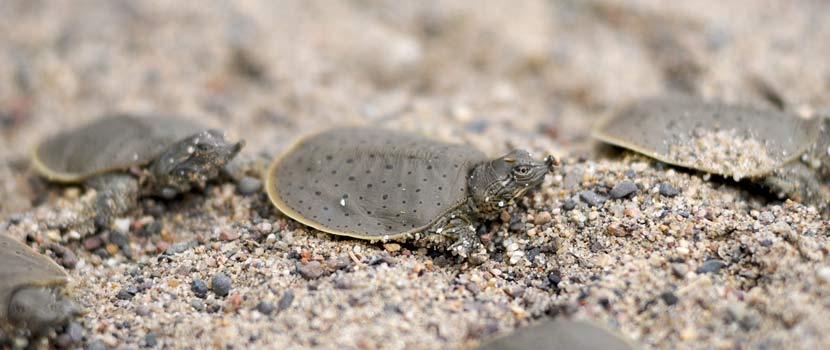
Turtle relocations were more frequently found along natural shorelines with vegetation, aquatic plants and logs than along shorelines with walls, riprap or docks. The softshells were also found in areas with sandy beaches, especially those with limited activity. This is because these are prime nesting areas.
6. For humans, it gets very dark and lonely on the lake in the middle of the night.
The turtle team conducted several 24-hour follows of a selected group of three turtles per species. They relocated and mapped the turtles every hour from 8 AM until 8 AM the next morning. While many of the softshells were active at night, the snappers and painted were not, and I was told it got very dark and lonely after midnight.
7. Softshells do not move at all during the winter, while snappers do.
Several radio transmitters carried an extra feature that allowed us to measure turtle activity (moving or not moving) and water temperature every 15 minutes. When we downloaded the data (over 50,000 data points per turtle), we found that the softshells did not move at all from late November to early March. When the lake was frozen, those turtles stayed put. The snappers did not move much during the winter months, but they did have some activity with short movements.
8. Ice diving takes a lot of work.
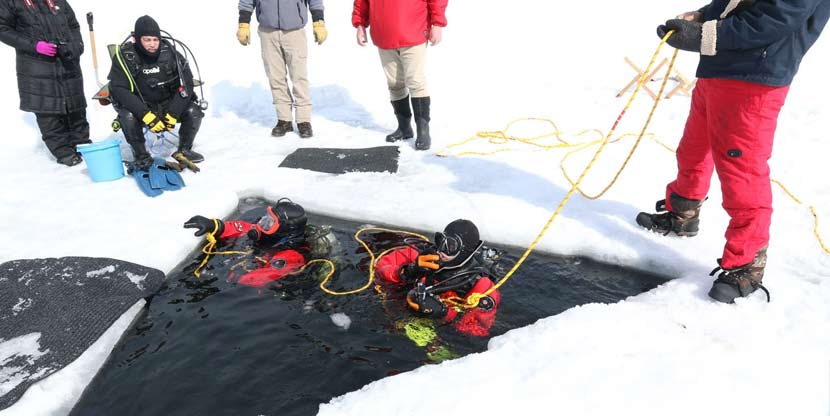
We tracked a group of softshells on the east side of the lake in January and February 2018. We stood on the ice and the radio signal indicated that the turtles were directly below us in 15 feet of water. We tried looking for them with underwater cameras but had very limited visibility.
Someone had the idea to send divers to look for the turtles. Because of cold water temperature and restricted access and exits, diving in the winter requires more logistics than in the summer. It took about 20 people to get eight divers in the water for about 15 minutes each. Several turtles were found, and all the divers said it was very dark and they could not see beyond their flashlights.
9. Current water quality does not seem to affect turtle use.
A team of students from UST collected water chemistry information from known turtle locations as well as other areas of the lake. They looked at the pH, conductivity, nutrients, temperature, and salt levels.
In reviewing the data, we have not found anything connecting turtle use and the water chemistry of the lake. It does not appear that the turtles are affected by changes in water quality.
Learn a new conversation starter? Be the first to know about future blog posts by subscribing below.
About the Author
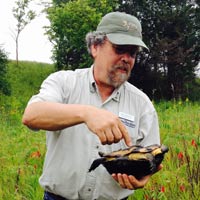
John Moriarty is the Senior Manager of Wildlife at Three Rivers Park District and has been with the Park District for 15 years. He has been involved in many of the wildlife restoration efforts and initiated the snake and butterfly efforts. John has led several projects to increase prairie habitat in the Park District. John likes exploring natural areas and looking for all types of plants and animals, but especially turtles.
Related Blog Posts
Reintroducing Wildlife at Three Rivers
By: John Moriarty
What do trumpeter swans, regal fritillary butterflies and bullsnakes have in common? All were reintroduced into Three Rivers parks. Read about what goes into reintroducing a species and discover what others were successfully reintroduced — some might surprise you!
What Happens To Collected Prairie Seeds?
By: Erin Korsmo
Getting collected seeds back onto the prairie is not as simple as you might think. Learn what goes on between seed collection and seed planting.
What's in a Seed? Why Prairie Seed Collection Matters
By: Erin Korsmo
Prairies are the most threatened habitat in Minnesota. Some species that depend on prairies are now on endangered and threatened species lists. Read on to learn about the important role volunteer seed collectors play in saving the prairies and the creatures that inhabit them.
